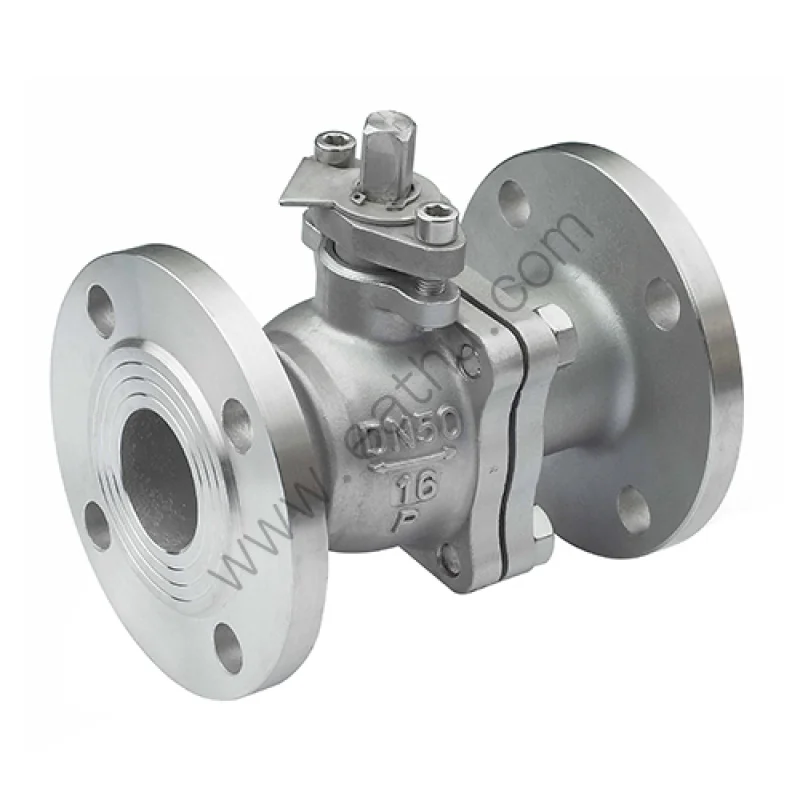Export Office: 21Floor, No.5 Nanhai Zhi Road,Qingdao, Shandong ,China
Work Shop: Beian Industrial zone, Qingdao,Shandong,China
+86 532 88256399
Martin
Inquiry now
-By Qingdao Fluido Industrial Co.,Ltd
Contents
I. Introduction
A.Definition of flange ball valve
B.Brief history of flange ball valves
C.Importance of flange ball valves in industrial applications
II. Structure and Components of Flange Ball Valves
III. Working Principle of Flange Ball Valves
A. Opening and closing mechanism
B. Flow control and regulation
IV. Types of Flange Ball Valves
A. 2PC Stainless Steel Flanged Ball Valve
B. 3PC Stainless Steel Flange Ball Valve
C. 2pc Stainless Steel Flange Floating Ball Valve
V. Applications of Flange Ball Valves
A. Oil and gas industry
B. Chemical and petrochemical industry
C. Water and wastewater treatment plants
D. Power generation plants
VI. Maintenance and Troubleshooting of Flange Ball Valves
A. Regular inspection and lubrication
B. Common issues and solutions
C. Safety precautions while handling flange ball valves
VII. Future Developments in Flange Ball Valve Technology
A. Advancements in materials and design
B. Integration of smart technology
C. Environmental considerations and sustainability
VIII. Conclusion
I. Introduction
A.Definition of flange ball valve
A flange ball valve is a type of ball valve that can connect with a pipeline or other equipment with a flange, which is easy to connect and maintain. The flanged ball valve has a ball with a hole in the middle which can allow the liquid to pass through when the hole turns to the pipe direction. The flanged ball valves are easy to operate and install, therefore usually used in various industry scenes. Including oil and gas, chemical processing, water treatment, and power generation.
B.Brief history of flange ball valves
First developed in the 1950s, flange ball valves were an innovative solution to control the flow in pipelines and quickly gained popularity due to their easy operation and reliable performance. Over years after continuous transformation, the material and performance are improved.Now they are available in a variety of materials, like stainless steel, carbon steel, and brass etc,. to suit different scenes.
C.Importance of flange ball valves in industrial applications
Flange ball valves are an essential component in industrial applications for several reasons:
1. Easy Control and regulation: Flange ball valves can be opened or closed easily, and easy to regulate the flow of the medium, they are important part for maintaining the desired level of flow in systems.
2. Durability and reliability: Flange ball valves are normally made of high quality stainless steel, which can withstand corrosive and high pressure, high temperatures, so they are durable and reliable ,making them long-term performance and minimal maintenance requirements.
3. Versatility: Flange ball valves can be made from different materials and have various sizes to meet different requirements of different scenes. Therefore they can be used in a wide range of industrial applications, including oil and gas, petrochemical and water treatment etc. ,
4. Safety: Flange ball valves can provide a quick shut-off to ensure safety in case of emergency. They help prevent leaks, spills, and other potential hazards that could pose risks to workers and the environment.
5. Cost-effectiveness: Flange ball valves are made from high quality materials, which can serve a long time, less maintenance and less replace requirement.So that to improve working efficiency and reduce downtime, save cost for industrial companies.
II. Structure and Components of Flange Ball Valves


Material List | ||||
No | PARTS | MATERIAL | ||
1 | BODY | WCB | CF8 | CF8M |
2 | SEAT | PTFE | ||
3 | BALL | CF8 | CF8 | CF8M |
4 | O-RING | FPM | ||
5 | GASKET | PTFE | ||
6 | BONNET | WCB | CF8 | CF8M |
7 | BOLT | 304 | ||
8 | NUT | 304 | ||
9 | STEM | 304 | 304 | 316 |
10 | STEM WASHER | PTFE+25%GF | ||
11 | O-RING | FPM | ||
12 | PACKING | PTFE | ||
13 | WEAR WASHER | PTFE+25%GF | ||
14 | GLAND | 304 | ||
15 | DISC SPRING | 304 | ||
16 | GLAND FLANGE | CF8 | ||
17 | STOPPER | 304 | ||
18 | HEX SOCKET BOLT | 304 | ||
19 | NUT | 304 | ||
20 | HANDLE | WCB/CF8 | ||
21 | BOLT | 304 | ||
22 | NUT | 304 | ||
III. Working Principle of Flange Ball Valves
A. Opening and closing mechanism
The flange ball valve has a ball type disc inside the valve body. When the valve is in the open position, the hole in the disc aligns with the pipeline direction, allowing the medium to pass through. When the valve is in the close position, the ball disc is rotated 90 degrees to stop the medium flow.
B. Flow control and regulation
Flange ball valves provide a tight seal when closed to avoid leakage. By controlling the twisting direction of the handle, can control the direction of the ball disc, so that to control the flow rate .
IV. Types of Flange Ball Valves
A. 2PC Stainless Steel Flanged Ball Valve
B. 3PC Stainless Steel Flange Ball Valve
C. 2pc Stainless Steel Flange Floating Ball Valve

V. Applications of Flange Ball Valves
A. Oil and gas industry
B. Chemical and petrochemical industry
C. Water and wastewater treatment plants
D. Power generation plants
VI. Maintenance and Troubleshooting of Flange Ball Valves
A. Regular inspection and lubrication
1.Check the surface of the valve, is there any corrosion or damage. Are there any leaks, or leak risks.
2. Check the bolts and nuts which are connecting the ball valve flange and pipeline flange. Make sure they are properly torqued to prevent leaks.
3. Lubricate the valve stem regularly to ensure smooth operation and avoid corrosion.
4. Inspect the seals and gaskets, to replace them in case there are any signs of aging or damage. Keep good sealing always.
B. Common issues and solutions
1. Leaking: First consider the seals and gaskets for damage. Replace them if necessary. Also, check the flange bolts and nuts for proper tightness. Last, check whether there are cracks on the valve body.
2. Stuck valve: If the valve is difficult to operate, check for any corrosion or foreign matter that may cause the issue. Clean the valve and lubricate it to solve the problem.
3. Valve not closing properly: If the valve is not closing properly, check the foreign matter between the ball and seats,and also alignment of the ball and seats.Clean or adjust them if necessary to ensure a tight seal.
4. Valve handle or actuator issues: If the valve handle or actuator is not working properly, check for any mechanical issues or damage. Replace or repair them if necessary.
C. Safety precautions while handling flange ball valves
1. When handling valves, Always wear gloves and safety glasses to protect yourself from being hurt.
2. Make sure the valve is properly depressurized and the flows are stopped before doing any maintenance or troubleshooting.
3. Use tools and equipment correctly for handling or maintenance valves to avoid any accidents or injuries.
VII. Future Developments in Flange Ball Valve Technology
A. Advancements in materials and design.
l Designers continue to research and develop new materials to improve the performance, durability, corrosion, and wear resistance of flanged ball valves
l In order to produce more precise valve parts, 3D printing technology is also applied to valve parts.
B. Integration of smart technology
l The integration of sensors, actuators, and control systems into flange ball valves enables automatic operation, remote monitoring, and automatic fault diagnosis. Improve work efficiency, reduce labor costs, reduce failure rate, and ensure the normal operation of the system.
l Smart valves transmit real-time data on valve performance, condition, and maintenance requirements back to the control center, increasing efficiency and reducing downtime.
l Iot connectivity can be directly applied to existing factory systems to improve the management and work efficiency of factories.
C. Environmental considerations and sustainability
Develop sustainable materials, such as recycled or bio-based plastics, for use in valve parts to reduce the carbon footprint. - Improve valve design and seal mode to reduce leakage rate and reduce environmental pollution, so as to meet the purpose of sustainable development.
VIII. Conclusion
This paper discusses the key features and advantages of flanged ball valves and describes the process and methods of operation and maintenance. Their ability to handle high pressures and temperatures as well as corrosive materials, as well as their easy, flexible and fast operation, make them an important part of many industrial processes.
Looking ahead, the flanged ball valve industry is expected to continue to grow. However, there are also challenges that need to be addressed, such as improving efficiency, reducing environmental impact, and meeting changing regulatory requirements. By staying ahead of these challenges and embracing innovation, the flanged ball valve industry can continue to thrive and contribute to the success of modern industry.
Export Office: 21Floor, No.5 Nanhai Zhi Road,Qingdao, Shandong ,China
Work Shop: Beian Industrial zone, Qingdao,Shandong,China
+86 532 88256399
Martin
© 2020 Qingdao Fluido Industrial Co.,Ltd. All Rights Reserved. Qingdao fluido valve

